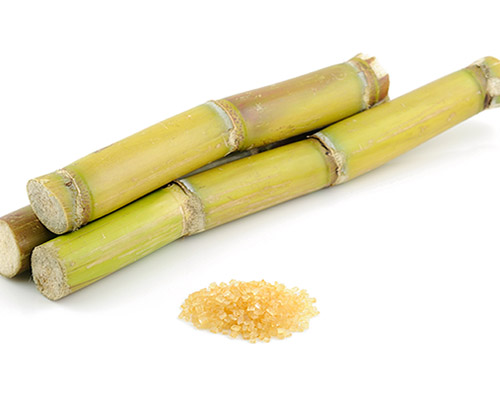Sugar is still a major trade commodity and is produced not only from sugar cane and beets but also from starch products such as corn and wheat. Sugar is used in food and food products but also in ethanol and spirits production. We use table sugar in our homes and bakeries, liquid sugar in confectionary and syrups in bread baking. The use of sugar is versatile.
- Sugar plays an important role in most baking applications to enhance flavors and sweetness. It’s a major component to add sweetness but sugar, in itself, is also an art to master for confectioners. Caramelized sugar is used in candy and professionals create sugar sculptures.
- Sugar can also act as an anticoagulant by delaying the coagulation of proteins, such as in baked custards and other desserts.
- When heated sugar breaks down to produce the color and desirable flavor that characterizes many cooked foods such as steaks, pan-fried dumplings, cookies, breads etc. This is caused by sugars reacting with proteins as they break down in the cooking process, called the Maillard reaction.
- Sugar reduces the water activity in foods and beverages, making water unavailable for use by bacteria and fungi, thereby reducing microbiological activity and mold formation. Sugar is used as a preservative.
- Sugar provides bulk, density, and viscosity in food products. Therefore removing or reducing sugars from high-sugar-containing products and replacing them with lower energy sweeteners requires that they be replaced by other molecules that can control these physical changes in the product. As an example, in breakfast cereals sugar often plays an important functional role to provide lubrication for the processed “dough”.
The importance of sugar and how this affects final food is therefore important to food companies all over the world.
Food and beverage manufacturers world-wide are looking for ways in which they can reduce the sugar content of their products in response to perceived consumer demand. This often poses some technical barriers due to sugar’s role in providing more than just taste. This complex combination of texture and taste makes the reduction or elimination of sugar more challenging than simply dropping a non-nutritive sweetener into a product in place of sugar. Even a straight swap involves significant challenges with getting the appropriate flavor and stability in foods exposed to high temperatures. Different sugar components have also different effects, something I will write about in another article.
OPSIS Liquid Monitoring is developing equipment and applications that allows detailed analysis of sugar and sugar components in food production. Keep an eye on our recent developments!


